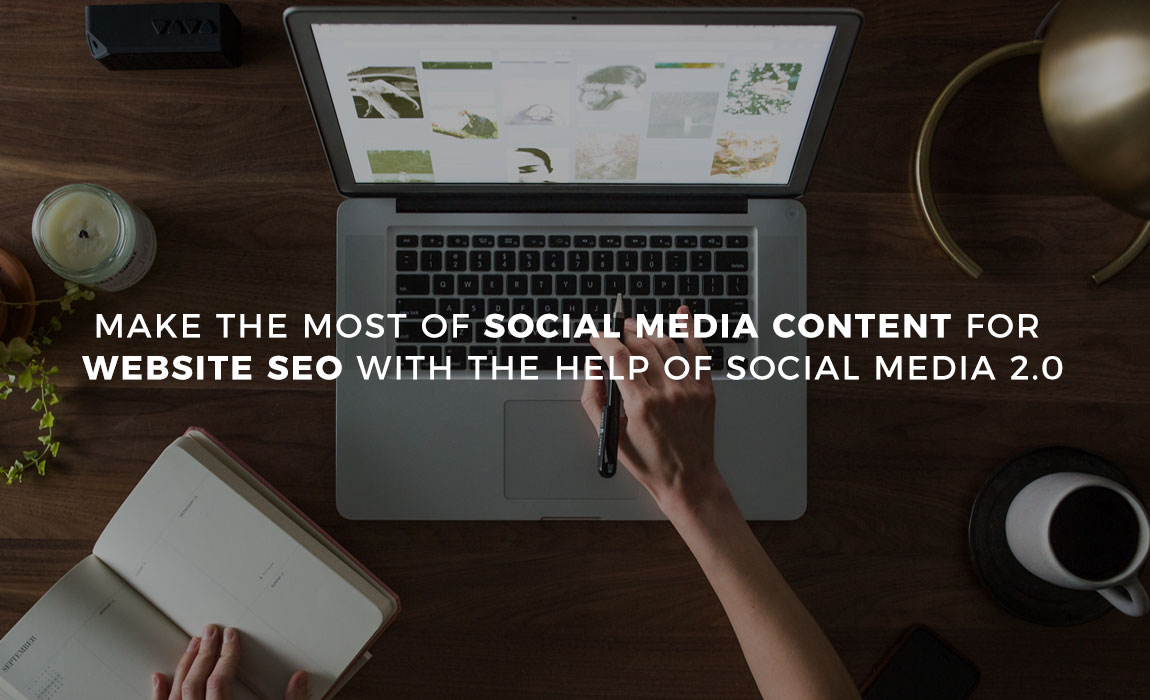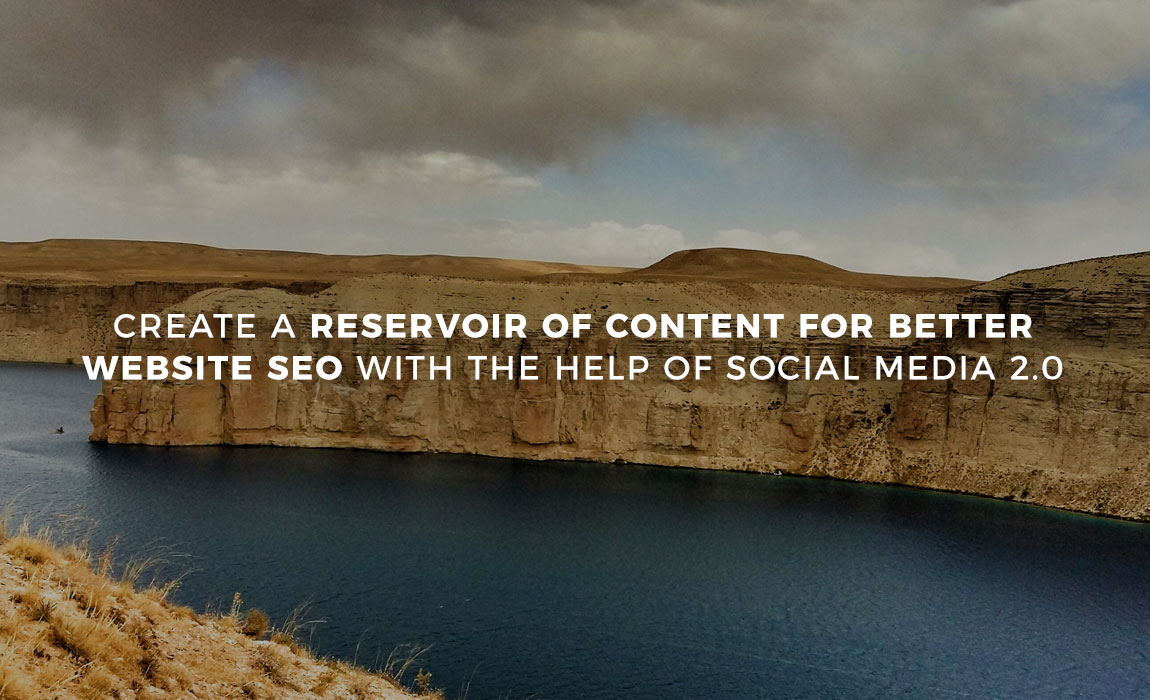Social Media 2.0 History: The Age of Hungry Giants
Social media is an important and almost inseparable part of a brand’s strategy when it comes to building up reputation and establishing one’s influence in the market. Being able to connect directly with consumers and to cater to their individual and personal tastes is not something brands can take lightly. This is especially important owing to the immense opportunity it offers as far as spreading content regarding products, services as well as offers is concerned, one consumer at a time. Social media is what makes brands human, lending them a more personal touch rather than just making them feel like insensitive machines. However, there is a dark side to social media that not many of us know about, especially owing to the fact that it is often hidden in plain sight.
In order to give you a glimpse of this dark side of social media, one needs to understand and realize that social media platforms are not mere playgrounds for businesses; they are in fact businesses in themselves. In other words, even though social media platforms appear to be specifically built for the purpose of allowing other businesses to flourish, they are also concerned with their own profit and organizational goals. Hence, whenever a business publishes content on a social media platform, it is in fact entering into a hidden contract through which the platform itself earns its due through your content and your attempt to promote yourself. Well, this seems like a pretty logical agreement at first glance, even though it is not one which appears to be immediately apparent as far as most businesses are concerned, who are content with the conventional and superficial manner in which these networking platforms serve their purpose.

This logical agreement soon becomes shrouded in doubt as soon as one realizes the extent to which social media platforms go to in order to earn their due through your content and your promotional strategies. A good example is that of Facebook, whose modus operandi when it comes to keeping visitors stuck to its social framework, is to cheat and steal views! This might appear quite harsh a statement for those who do not know the inside story. But, here is a fact that can change your mind. A content creator, who puts his blood and soul into crafting a video, uploads it onto his personal YouTube or Vine profile. On YouTube, the video gets a particular number of views, which often consists of viewers and subscribers that the content creator had to amass over an extended period of time with the help of carefully crafted strategies aimed at engaging the right people in the right way. For the sake of this example, let’s take the average number of views amassed by the video on YouTube to be around 20,000 to 50,000 in number. The same video if uploaded on Facebook is bound to attract views that will be in the range of anywhere between 60,000 to 150,000. Doesn’t this seem like a huge difference?
The main reason why Facebook is able to amass such a load of views is due to the way in which their news feed algorithm is structured. On Facebook, a view on a video is counted if the individual stays till the three second mark. This means that the users, who might be casually scrolling through the news feed on Facebook, might come across a video that starts automatically due to the in-built auto-play feature on the platform. Depending on the speed of the scroll, the user may accidently view the first three seconds of the video without even having the chance to turn on the sound! This means most of the views that are amassed by a video on Facebook are borne from accidents instead of from viewers who are genuinely interested in the video. Even though this might seem like just a harmless gimmick to gain the maximum revenue from content published on the platform, it has a corrosive impact on the motivation behind the content creation process. This is because the concept of clicks for content creators is something that is derived from attracting genuine interest for the effort and time put into the presentation as well as the type of content being created. However, if the very parameter or metric that defines the amount of appreciation that a content creator garners in return for the amount of hard work put into the creative process is degraded, there are bound to be consequences which won’t benefit the people behind the work of art.
Other than the Facebook algorithm, there are actually numerous people who contribute to the degradation of the originality of content through the process of stealing views for the purpose of self-promotion. These individuals share YouTube videos on their Facebook profiles and manage to garner massive amounts of views owing to the convenient way in which the algorithm is geared towards gathering even “unconscious” views. They subsequently use this immense inflow of views to promote themselves by placing the link to their products or their works within eye-shot of the video promoted in the former fashion. This is the best way to profit off of someone else’s content without having to do all the hard work yourself!
W-Fact File: According to a study conducted by Tubular Labs and Ogilvy, out of the videos that were hailed as being the top 1000 amongst all of those published on Facebook in the year 2015, about 725 were “freebooted videos,” which namely are those that have been scraped off of YouTube by Facebook users.
The Role of Social Media in SEO
Social media platforms have an indelible role to play as far as search engine rankings for businesses and websites in general are concerned. There have been studies that dared to validate the point that your social media presence might be directly related to your search engine ranking. However, this was proven to be wrong by more credible sources, namely Google’s own update about the involvement of social media presence in the ranking algorithm. On the other hand, social media presence also has an essential role nonetheless, owing to the fact that these networking platforms are vast fertile grounds for backlinks. At the same time, social media platforms also act as ways to direct your audience towards your website, which is essential when it comes to ensuring the movement of traffic to where it really matters. Nevertheless, the crucial point to be observed in this case, is that social media does not contribute much to overall search engine ranking.
To develop a better understanding of how social media intertwines with SEO, a good example would be turn to how search engines like Google index social media content. Before that, a fact to get you on track with where we are going:
Did you know: For a Google used to index Twitter feeds on a real-time basis!
The indexing process was based upon the number of times the tweet was retweeted, and which audience segment was the most involved in the process of retweeting. It also includes considering the number of times that the tweet was
“favorited” during its tenure on the Twitter feed. These parameters allow the search engine to specifically find those tweets that have higher value and hence seem the most apt as far as being indexed is concerned. At the same time, one needs to understand that Google is not an all knowing digital God, but rather a digital flashlight that is large enough to shed light on most if not all content that falls into the endless pit that is the internet. Due to small but largely unavoidable limitations, Google still does not have the power to index all the tweets owing to sheer quantity of content that is produced on the platform. If you look at Twitter as a website that is dedicated to developing real time content, designing thousands and millions of micro-blogs consistently at a specific point of time, a search engine is bound to have a difficult time coping with indexing this website.
At the same time, it cannot be argued that social media networking platforms do not provide the chance for brands to build their identity and create an image of their liking that they can portray in front on their audience. Building brand identity on social media is similar to forging a sword in the fires of a furnace, whereby the sword is the reputation of the brand and the fire is the scrutiny that comes with being in the eyes of a vast digital audience. This aspect is again reflected in the way in which PR nightmares erupt on social media platforms owing to the inability to justify oneself and one’s intentions when it comes to explaining a blunder that has just been observed by a massive number of angry and confused customers. In the light of such issues and negative impacts, brands realize that being in the eye of the storm of negative reviews and in constant uncertainty as far as validity of brand image goes is not the right environment to create content that is developed with creative freedom. With social media content becoming more and more diverse as time passes by, it is necessary to allow oneself to be carried to new and potentially unheard of places when it comes to marketing oneself and engaging with customers in the best possible manner.
At the same time, social media platforms also act as massive canvases that can be used to express oneself, either as an individual or as a brand. In this case, the fundamental idea behind creating social media content is the fact that it allows brands to develop a more human touch, while also providing individuals to express on a scale that is larger than humanness and individuality. However, there is a flipside to this scenario. If personified, these social media platforms are akin to those individuals who refuse to be put down and constantly speak their mind, no matter what the circumstances or the type of listeners privy to them. What if we told you that there is a razor-edged sword being held at the throat of these lovely, free-spirited and charming people at this very moment? This sword is built of one specific force – increasing advancement of digital platforms coupled with subsequent changes in consumer awareness towards elements like privacy issues, spam accounts, heavy moderation and content funneling, among other problems.
These issues are sown in like seeds in almost all social media networks of yesterday and today, just waiting to burst forth and bring down the entire establishment. With the advent of new and improved social media platforms, certain problems and issues suddenly turn from ignorable burdens to blaring flaws, which sometimes have no chance of being rectified in time to save the platform. Remember Orkut? With the advent of platforms like Facebook, which contained exceedingly efficient user interfaces and privacy settings miles ahead of those of Orkut in terms of safety, this social media platform succumbed to the very force that such enterprises are built upon, the force of constant progression. All the content that users have uploaded on Orkut over the years was lost in the digital abyss forever. Imagine if this was to happen to any major social networking platform of today, such as Facebook or LinkedIn, where brands upload a plethora of content specifically tailored for the dynamics of the platform. It would be heartbreaking to see your content, behind which countless man-hours and probably a few job roles were extinguished, completely forgotten forever, would it not?

Where does Social Media 2.0 come in?
There have been mythological stories and accounts written about substances that have the ability to cure any disease, dissolve any metal on the face of the globe. This universal solvent was often known as Alkahest and due to its amazing properties as well as the myriad uses that could be attributed to it, it was sought after by many a philosopher and alchemist. What we at CompuBrain are offering is a modern-day equivalent of the Alkahest, a solution which has the ability to solve all the problems that come with creating content for social media platforms. The opportunities that come with Social Media 2.0 might not be as apparent to those brands that have become far too accustomed with creating content along the lines of incessantly repetitive social media marketing strategies. Let us make it easier for you:
• Unlock another Level of Website Content and Structure Optimization – one of the biggest uses of Social Media 2.0 is that you can now use the content that you create for publishing on social media platforms to improve upon website SEO. Social Media 2.0 brings everything you have ever published on social media under one digital roof, your website. Each piece of content that you have designed for the purpose of representing your brand on social media can now be used for purposes other than merely that! The level to which you can customize and brighten up the experience of users using Social Media 2.0 is fathomless at the moment, owing to the way in which it allows for the rediscovery of the extent to which website content and structure can be altered to present users with different degrees of engagement and information itself. With the rise of conceptual frameworks like A+ content which involves the integration of video, textual and graphic information into a single page of content, Social Media 2.0 can open up horizons not yet pondered upon. For instance, imagine structuring a website in such a way that once users have gone through the knowledge-oriented aspect, they can move onto the social aspect, where they have the chance to get involved with the brand on a more intimate level. Imagine being able to deliver content related to both the technical know-how of the product and the services offered by the brand on one hand, and on the other you are able to portray the internal workings of the company, resplendent with the everyday tidbits of fun and interesting experiences that employees share during their work routine. This dichotomy is bound to be an immense lure for users owing to the fact that they see two vastly different but equally important sides of an organization at the same place.
• Save your Content from Hungry Social Media Platforms – By taking content-hungry social media platforms out of the equation, brands can make use of their content, be it in the form of tweets, videos or graphics, in ways that were not available to them previously. This includes being able to use a piece of performance art or social commentary in the form of a video as a lead generation tool with the help of basic landing page dynamics. Without the possibility of your content being ignored in the vast ebb and flow of social media feeds, you are bound to come across certain characteristic properties of the content which may not have seemed apparent before. When placed within the contextual framework of the internet as a whole, corporate videos, infographics, tweets, and other such content can be seen from a completely different perspective as far as their utility in terms of brand development is concerned. While you will have the option of connecting with users on a human level with social media content on one hand, on the other hand you will have the chance to develop new ways to explore the possibilities that come with having a diverse variety of content on your website. You can curate entire journeys for users using tweets as signboards for visitors to move from one node of their website experience to another, while you can convert videos and extensive infographics into lead magnets and curate entire campaigns around them. You can even choose to consolidate them into a video/photo album that you can direct users to as soon as they land on your website. The possibilities for the betterment of user engagement are limitless!

• Maintain a Repository of Content at your Helm at All Times: Having a repository of content on your website is similar to owning an arsenal. The more content you have on your website, the more diverse are the ways to new and untapped markets. This allows a brand to branch out into digital domains which have not been reached yet, either due to the lack of proper means to get there or due to the inability to traverse beyond the boundaries of social platforms. Social Media 2.0 provides a means to develop better tools for navigating the digital realm, which being as vast and full of opportunities as it is, makes the application of the same as valuable as oars for your digital vessel. One of the most apparent uses of Social Media 2.0 is the ability to add much more vastness to your website, thereby adding considerably to your digital presence . Each social media post that you integrate onto your website is indexed by Google and other search engines, thereby allowing them to exist as independent URLs or web pages on your website. This adds more weight to your digital domain, thereby allowing a brand to grow in scale as far as their online presence is concerned, making it easier to attract both the users as well as search engines, the latter through larger number of backlinks and the former through increased volume of content. (naijanews.com) With increased number of pages on your website, the ability to garner larger number of both inbound and outbound links increases to a large extent, an aspect that is directly related to higher inflow of traffic as well as increased frequency of web crawling.
Would you like to know why increased indexing and crawling frequency is important for ensuring proper levels of website and content optimization?
• Keyword Optimization for Social Media Content: one of the most important side effects of having all your social media content consolidated on your website is the fact that you now can use this content to rank for keywords that were never within the reach of your domain . In this case, as every single piece of social media content that you have posted till date appears in the form of an individual web page, complete with its own URL, they can all be ranked for their own keywords. This can give content that went previously unnoticed on social media platforms in attracting an immense amount of traffic with the help of the right keywords. The power to optimize your social media content for search engines is nothing less than a blessing, owing to the fact that there are definite ways in which this content can enable brands to reach out into untapped realms on the Internet.


